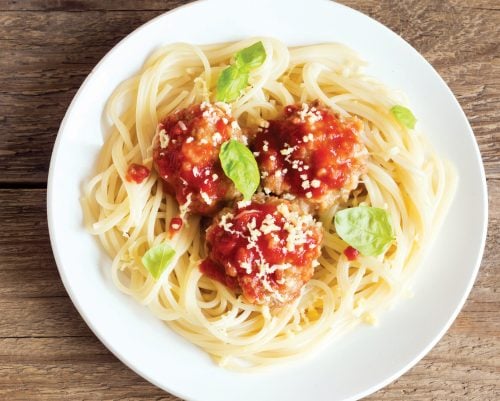
Can the size of your plate affect how much you serve and then eat?
Go to a homewares shop and you’ll quickly see there’s no ‘standard’ size for dinner plates any more.
Researchers from the US looked at the size of dinner plates from different decades being sold on Ebay. They found the size has increased by nearly a quarter since 1900. That’s a potential to put 25 per cent more food on our plates. Some dinner plates are now 30cm in diameter.
Studies investigating whether plate size really does make us serve larger portions have had inconsistent results. But you may be more likely to serve a larger portion on a bigger plate if you’re a healthy weight, a Kiwi or Canadian (rather than Korean or Chinese) or distracted when plating up.
Putting more on a larger plate may be down to an optical illusion. The same-sized portion looks larger on a plate with a small or no lip, and smaller on plate with a large rim. So, to help portion control, choosing a smaller plate with only a small lip potentially cuts back the portion distortion.
Article sources and references
- Peng M et al. 2017. See food diet? Cultural differences in estimating fullness and intake as a function of plate size. Appetite 117:197-202https://www.ncbi.nlm.nih.gov/pubmed/28676448
- Peng M. 2017. How does plate size affect estimated satiation and intake for individuals in normal-weight and overweight groups? Obesity Science & Practice 3:282-8https://www.ncbi.nlm.nih.gov/pmc/articles/PMC5598018/
- Robinson E et al. 2014. Dishware size and energy consumption. Obesity Reviews 15:812-21https://www.ncbi.nlm.nih.gov/pubmed/25040672
- Rolls BJ et al. 2002. Portion size of food affects energy intake in normal-weight and overweight men and women. American Journal of Clinical Nutrition 76:1207-13https://www.ncbi.nlm.nih.gov/pubmed/12450884
- Steenhuis I & Poelman M. 2017. Portion size: Latest developments and interventions. Current Obesity Reports 6:10-17https://www.ncbi.nlm.nih.gov/pmc/articles/PMC5359369/
- Van Ittersum K & Wansink B. 2012. Plate size and color suggestibility: The Delboeuf illusion’s bias on serving and eating behaviour. Journal of Consumer Research 215-8https://academic.oup.com/jcr/article/39/2/215/1795747
www.healthyfood.com










